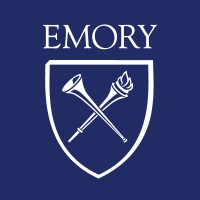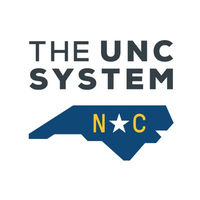预约演示
更新于:2025-05-07
FLT3 x MerTK
更新于:2025-05-07
关联
3
项与 FLT3 x MerTK 相关的药物作用机制 FLT3抑制剂 [+1] |
在研机构 |
原研机构 |
在研适应症 |
非在研适应症- |
最高研发阶段临床1/2期 |
首次获批国家/地区- |
首次获批日期1800-01-20 |
作用机制 AXL抑制剂 [+4] |
在研机构 |
原研机构 |
最高研发阶段临床1期 |
首次获批国家/地区- |
首次获批日期1800-01-20 |
作用机制 FLT3抑制剂 [+1] |
在研机构- |
在研适应症- |
非在研适应症 |
最高研发阶段无进展 |
首次获批国家/地区- |
首次获批日期1800-01-20 |
18
项与 FLT3 x MerTK 相关的临床试验NCT04992858
A Phase II Study of the Ningetinib in Advanced NSCLC With MET Exon 14 Skipping Mutations
This is a phase II, Single-arm,Open-label Study evaluating the safety and efficacy of CT053PTSA in Advanced Solid Tumors With MET Exon 14 Skipping Mutations
开始日期2022-11-27 |
申办/合作机构 |
NCT04872478
An Open Label Evaluation Phase 1 Trial of the Safety and Pharmacokinetics of MRX-2843 in Adolescents and Adults with Relapsed/Refractory Acute Myeloid Leukemia, Acute Lymphoblastic Leukemia, or Mixed Phenotype Acute Leukemia
This is a Phase I, open-label, non-randomized, dose escalation study in adolescents and adults with relapsed/refractory acute myeloid leukemia, acute lymphoblastic leukemia, or mixed phenotype acute leukemia. Patients will receive continuous oral MRX-2843 in 28 day cycles at predefined dose cohorts.
开始日期2022-04-01 |
申办/合作机构 |
NCT04946890
Phase I/II Clinical Study to Evaluate the Safety, Tolerability, Pharmacokinetics and Effectiveness of MRX2843 Tablets in Patients With Relapsed/Refractory Acute Myeloid Leukemia
Patients will receive oral MRX2843 for 28 days to study the side effects, tolerability and best dose for treating relapsed or refractory acute myeloid leukemia With FLT3 Mutations.
开始日期2021-07-01 |
申办/合作机构 |
100 项与 FLT3 x MerTK 相关的临床结果
登录后查看更多信息
100 项与 FLT3 x MerTK 相关的转化医学
登录后查看更多信息
0 项与 FLT3 x MerTK 相关的专利(医药)
登录后查看更多信息
22
项与 FLT3 x MerTK 相关的文献(医药)2025-04-24·Journal of Medicinal Chemistry
Discovery of Novel TYRO3/MERTK Dual Inhibitors
Article
作者: Zhou, Yubai ; Guduru, Shiva K. R. ; Yan, Dan ; Shelton Earp, H. ; Zhao, Jichen ; Frye, Stephen V. ; Kania, Catherine E. ; Stashko, Michael A. ; Kong, Deyu ; Huang, Daowei ; DeRyckere, Deborah ; Graham, Douglas K. ; Wang, Xiaodong ; Kireev, Dmitri ; Ding, Ransheng ; Huelse, Justus M.
2024-09-01·Leukemia Research
Combining the novel FLT3 and MERTK dual inhibitor MRX-2843 with venetoclax results in promising antileukemic activity against FLT3-ITD AML
Article
作者: Wang, Guan ; Hüttemann, Maik ; Edwards, Holly ; Carter, Jenna ; Liu, Fangbing ; Taub, Jeffrey W ; Li, Chunhuai ; Wu, Shuangshuang ; Wang, Yue ; Ge, Yubin ; Gai, Yuqing
2024-04-11·Journal of Medicinal Chemistry
Discovery of Novel Macrocyclic MERTK/AXL Dual Inhibitors
Article
作者: Chen, Zhilong ; Wang, Xiaodong ; Kireev, Dmitri ; Earp, H. Shelton ; Zheng, Hongchao ; Frye, Stephen V. ; Stashko, Michael A. ; DeRyckere, Deborah ; Kong, Deyu ; Tian, Qiang ; Yan, Dan ; Graham, Douglas K.
19
项与 FLT3 x MerTK 相关的新闻(医药)2025-04-24
·药事纵横
在新药研发的漫漫征途中,药物首次进入临床试验,无疑是一个极具意义的重大里程碑。这背后意味着相关靶点已完成了基因表达、蛋白质结构和功能等多方面的生物学功能验证,极有可能在对应疾病的发病机制里扮演着关键角色,为攻克疾病带来新的希望。今天,我们聚焦3月崭露头角、首次进入临床的两个重要靶点——ACK1 和 CD83,看看它们如何引领医药创新。ACK1:前列腺治疗的新曙光?ACK1(Activated Cdc42-associated kinase 1),也称为TNK2,是一种非受体酪氨酸激酶,由TNK2基因编码。它能够结合多种受体酪氨酸激酶,如EGFR、MERTK、HER2、PDGFR和胰岛素受体等,并通过磷酸化下游效应分子(如AKT)来传递细胞外信号,可调节多种肿瘤中的各种致病信号传导事件。ACK1激酶在多种癌症的发生和耐药性中发挥重要作用。前列腺癌中,ACK1促进AR核转位及转录激活,增强去势抵抗性,并抑制AR抑制性长链非编码RNA(NXTAR),为CRPC治疗提供新思路。乳腺癌中,ACK1促进细胞周期基因转录,导致CDK4/6抑制剂耐药,在TNBC中敲除ACK1可抑制肿瘤生长。肺癌中,ACK1通过STAT3、AKT和MAPK信号促进肿瘤进展和耐药。结直肠癌与胃癌中,ACK1受TNF-α激活,促进AKT信号并调控上皮-间充质转化。血液恶性肿瘤中,ACK1通过SHP2磷酸化调节MAPK信号,与CSF3R突变相关。ACK1在肝癌、骨肉瘤及胶质瘤中亦具促癌作用。ACK1在多种癌症中过表达或基因扩增,包括前列腺癌、乳腺癌、非小细胞肺癌、胶质瘤、卵巢癌、胰腺癌和结直肠癌等。在免疫调节方面,ACK1抑制T细胞活化。ACK1通过磷酸化CSK结合蛋白(CBP/PAG)及CSK(pY18-CSK),增强CSK活性,进而限制T细胞活化。CRPC患者在接受免疫检查点抑制剂(ICB)治疗后,ACK1/pY18-CSK信号通路被重新激活,导致ICB耐药。ACK1的基因敲除或抑制剂治疗可克服ICB耐受,提示ACK1抑制剂可与ICB联合用于治疗耐药性实体瘤。(R)-9b:前列腺癌治疗新星的研发之路与潜力探索(R)-9b 正由 TechnoGenesys 紧锣密鼓地进行商业化开发。其研发历程可追溯至 2017 年,莫菲特癌症中心的研究人员在《cancer cell》发表的论文中,首次向世人报道了 (R)-9b。当时的研究揭示了一个关键机制:酪氨酸激酶 ACK1(TNK2)能够通过磷酸化 AR 启动子上游的组蛋白 H4 酪氨酸 88(pY88-H4),促使 WDR5/MLL2 复合体与之结合,引发 H3K4 三甲基化修饰。这一系列反应最终增强了 AR 及其剪切变体 AR-V7 的转录,直接导致前列腺癌向去势抵抗性(CRPC)状态发展,并维持其恶性特征。而 ACK1 抑制剂(R)-9bMS 则如同“刹车”一般,可逆转 pY88-H4 修饰,让 CRPC 细胞重新对雄激素治疗敏感,同时降低 AR/AR-V7 水平,有效抑制肿瘤生长。这一发现明确了 ACK1 介导的表观遗传回路在 CRPC 发展中的核心作用,为后续治疗指明了新方向。2022 年 6 月,莫菲特癌症中心研究人员再次在《science translational medicine》发表重磅研究,聚焦去势抵抗性前列腺癌(CRPC)对恩杂鲁胺耐药的关键机制。原来,AR 在锌指 DNA 结合结构域的赖氨酸 609(K609)发生乙酰化(acK609-AR),这使得 AR 即便面对恩杂鲁胺的抑制,仍能进入细胞核并激活特定转录程序,实现“逃逸”。深入探究发现,ACK1(TNK2)激酶介导的 AR Y267 磷酸化是 AR K609 乙酰化的必要前提,二者形成正反馈回路,不断推高 AR 和 ACK1 的表达水平,加速 CRPC 进展和耐药性发展。令人欣喜的是,ACK1 小分子抑制剂(R)-9b 能够精准阻断 AR Y267 磷酸化,进而抑制 K609 乙酰化,显著遏制恩杂鲁胺耐药 CRPC 肿瘤的生长,为 CRPC 患者带来新希望。2022 年 12 月,研究人员在《nature communication》又有新突破。他们发现 ACK1 通过磷酸化 C-terminal Src 激酶(CSK)的酪氨酸 18(pY18)增强 CSK 功能,抑制 T 细胞激活,致使实体瘤对免疫检查点阻断(ICB)治疗产生耐受。Tnk2 基因缺失小鼠呈现出 CSK Y18 磷酸化减少,CD8 + 和 CD4+ T 细胞自发激活的现象,ICB 耐药肿瘤生长得到抑制。在接受 ICB 治疗的去势抵抗性前列腺癌(CRPC)患者中,ACK1/pY18-CSK 信号通路被重新激活,进一步证实该通路在 ICB 耐受中的关键作用。值得一提的是,ACK1 小分子抑制剂(R)-9b 对 ICB 耐药肿瘤同样具有抑制效果,这一发现为克服 ICB 耐药性开辟了新路径,有望拓展 ICB 疗法的应用边界。来到当下,TechnoGenesys 于 2025 年 3 月正式启动 (R)-9b 的 1 期临床试验。此次试验旨在评估 (R)-9bMS 对转移性去势抵抗性前列腺癌患者的安全性和耐受性,计划招募 30 名患者,患者需每日口服两次 (R)-9b,最长持续 6 个月,试验预计于明年 3 月公布数据,届时 (R)-9b 的临床潜力将进一步明晰。前列腺癌在全球男性癌症中占据显著地位,是全球男性中第二大常见癌症。2022 年,全球范围内约有 146 万例新诊断病例,这一庞大数字凸显了该疾病对男性健康的严重威胁。在前列腺癌的病程发展中,去势抵抗性前列腺癌(CRPC)是一个极为棘手的阶段。10 - 20% 接受雄激素剥夺疗法(ADT)的前列腺癌患者,通常会在 2 - 3 年内疾病复发,进展为 CRPC。这不仅极大地增加了治疗难度,也严重影响了患者的预后。从市场规模来看,根据 grand view research 的测算,2024 年全球 CRPC 市场规模达到 129 亿美元,并且预计在未来 5 年将以 8.7% 的复合年增长率(CAGR)持续增长。这一增长趋势反映出 CRPC 治疗领域存在着巨大的市场需求,随着人口老龄化的加剧以及前列腺癌发病率的上升,对更有效的 CRPC 治疗手段的需求愈发迫切。当前,CRPC 的治疗方式呈现多样化格局。化疗作为一线疗法,多西他赛是常用药物,使用多西他赛后患者的中位总生存期(mOS)为 19.2 个月。然而,化疗往往伴随着诸多副作用,对患者生活质量影响较大。雄激素受体(AR)靶向疗法常作为二线疗法,以恩杂鲁胺为例,在治疗使用多西他赛后进展的患者时,mOS 为 18.4 个月。但令人遗憾的是,几乎所有患者最终都会对恩杂鲁胺产生耐药性,使得治疗效果大打折扣。在其他靶向疗法中,PARP 单药作为 AR 进展后的单药三线疗法,奥拉帕尼的 mOS 为 18.5 个月;当与 AR 疗法联合作为一线疗法时,阿比特龙联合奥拉帕尼的 mOS 可达 42.1 个月。这些数据表明,现有治疗手段虽在一定程度上延长了患者生命,但仍存在诸多局限性,急需新的治疗药物来突破困境。(R)-9b 作为一种极具潜力的新型治疗药物,要在竞争激烈的 CRPC 治疗市场中脱颖而出,需要在临床试验中展现出比现有药物更优异的疗效。目前,针对 ACK1 靶点的特异性抑制剂主要有两款,分别是 TechnoGenesys 公司研发的 (R)-9b 以及四川大学研发的 21-a。其中,(R)-9b 在该领域处于领先地位,市场竞争态势相对缓和。CD83:白血病潜力靶点CD83是一种免疫球蛋白超家族成员,主要表达于成熟的树突状细胞(DCs)、激活的B细胞和T细胞等免疫细胞表面。它有两种形式:膜结合型(mCD83)和可溶型(sCD83),其中mCD83是成熟DCs的标志物。CD83在免疫应答中发挥重要作用,不仅作为共刺激分子促进T细胞和B细胞的活化,还参与调节炎症反应和维持免疫耐受。此外,sCD83在一些疾病模型中显示出治疗潜力,如在类风湿关节炎和炎症性肠病模型中,sCD83可通过调节细胞因子水平和诱导调节性T细胞来减轻炎症。基于 GEPIA 数据,CD83 在弥漫性大 B 细胞淋巴瘤(DLBC)中呈现出较高的特异性表达。此外,在近些年的研究里,CD83 在急性髓系白血病(AML)以及乳腺癌(BC)中同样具有特异性表达。CD83 CAR-T 疗法:急性髓系白血病治疗的新希望在癌症治疗领域,CAR-T 细胞疗法正逐渐崭露头角,成为攻克癌症的有力武器。其中,针对 CD83 靶点的 CAR-T 疗法近年来备受关注,特别是在急性髓系白血病(AML)的治疗研究上取得了令人瞩目的进展。罗斯威尔帕克癌症研究所作为该领域的先锋,已经将自体抗 CD83 CAR-T 推进至 1 期临床试验阶段,用于治疗复发或难治性急性髓系白血病。此次临床试验计划招募 26 名患者,旨在评估该疗法的安全性和初步疗效。这一举措为那些传统治疗手段无效的 AML 患者带来了新的希望。今年 2 月,罗斯威尔帕克癌症研究所还发表了关于 CD83 CAR-T 治疗乳腺癌的临床前研究成果。研究显示,CD83 CAR-T 细胞在输注后第 1 周,成功根除了 NSG 小鼠体内的 LM2 肿瘤。与仅接受 UT(未处理)或仅植入 LM2 肿瘤的小鼠相比,接受 CD83 CAR-T 治疗的小鼠,其 LM2 BLI 辐射度显著降低。这一临床前研究结果,不仅展示了 CD83 CAR-T 在乳腺癌治疗方面的潜力,也为其在其他癌症类型中的应用研究提供了有力的理论支持。急性髓系白血病是一种严重的血液系统恶性肿瘤。据统计,2021 年全球急性髓系白血病新发病例约为 14 万,其复发率高达 35%-85%。复发难治性 AML 具有高度的异质性,患者预后极差,5 年生存率仅约 10%。当前,临床指南推荐的治疗药物主要包括 FLT3 抑制剂、IDH 抑制剂和 BCL-2 抑制剂等,但这些药物仍无法满足所有患者的治疗需求,开发更有效的治疗手段迫在眉睫。从市场前景来看,急性髓系白血病治疗市场呈现出良好的增长态势。2024 年,全球急性髓系白血病治疗市场规模估计达到 34.7 亿美元,预计在 2025 年至 2030 年期间,将以 10.6% 的复合年增长率持续增长。这一增长趋势,一方面反映了 AML 患者群体对有效治疗方案的巨大需求,另一方面也为相关治疗技术和药物的研发提供了强大的市场驱动力。在竞争格局方面,CD83 靶点的布局目前相对较少,且参与者以非营利性组织为主,其中包括重庆大坪医院和墨菲特研究中心等。在这场角逐中,罗斯威尔帕克癌症研究所凭借其领先的临床试验进度,在 CD83 CAR-T 治疗领域占据了优势地位。随着研究的深入和临床试验的推进,CD83 CAR-T 疗法有望打破现有的 AML 治疗格局,为患者带来更为有效的治疗选择。结语在新药研发的征程中,3 月首次进入临床阶段的 ACK1 和 CD83 靶点备受瞩目。ACK1 在多种癌症中发挥着关键作用,其抑制剂(R)-9b 从基础研究迈向 1 期临床试验,若疗效理想,有望变革癌症治疗,打破去势抵抗性前列腺癌(CRPC)的困境。而 CD83 作为免疫调节的关键靶点,罗斯威尔帕克癌症研究所已将其 CAR-T 疗法推进至 1 期临床试验,若成功,将改写急性髓系白血病(AML)的治疗版图。这两个靶点承载着患者的希望,有望引领医药创新,推动行业迈向新的高度。对于后来者而言,存在以下核心机会点:ACK1 的优势在于机制深度与联合价值,CD83 的优势在于靶点的新颖性与临床急需性。药企可基于自身管线优势,选择快速临床转化(如 CD83 CAR-T)或长线多维开发(如 ACK1 跨癌种 + 联合疗法),抢占细分领域的制高点。参考资料1.ACK1/TNK2 kinase: molecular mechanisms and emerging cancer therapeutics2.ACK1/TNK2 Regulates Histone H4 Tyr88-phosphorylation and AR Gene Expression in Castration-Resistant Prostate Cancer3.Inhibiting ACK1-mediated phosphorylation of C-terminal Src kinase counteracts prostate cancer immune checkpoint blockade resistance4.grand view research5.GEPIA6.CD83 Expression By Human Breast Cancer Mediates Effective Killing By CAR T7.白血病药物——市场研究专题报告药事纵横投稿须知:稿费已上调,欢迎投稿
临床研究免疫疗法
2025-04-23
·精准药物
近期,JMC报道了一种新型TYRO3/MERTK双靶点抑制剂UNC9435(化合物44)的发现与优化过程,揭示了其在癌症治疗中的潜在应用价值。研究通过基于结构的药物设计、系统的构效关系分析以及多层次的生物学验证,首次实现了对TYRO3和MERTK的高效选择性抑制,并展示了其在抑制肿瘤细胞增殖和调节肿瘤免疫微环境中的双重作用。研究背景TAM家族受体酪氨酸激酶(TYRO3、AXL、MERTK)在肿瘤发生、转移和免疫逃逸中发挥重要作用。其中,TYRO3和MERTK在多种肿瘤(如非小细胞肺癌、黑色素瘤、白血病)中呈现协同作用,例如通过激活下游信号通路(如PI3K/AKT)促进肿瘤细胞存活,或通过抑制巨噬细胞清除凋亡细胞(efferocytosis)削弱抗肿瘤免疫反应。然而,现有抑制剂多为单靶点(如MERTK或AXL选择性抑制剂)或双靶点MERTK/AXL抑制剂,缺乏针对TYRO3/MERTK的选择性双重抑制剂。开发此类抑制剂有望同时靶向肿瘤细胞自身增殖和免疫微环境调控,从而提供更优的治疗策略。核心研究思路先导化合物发现与结构优化 研究以化合物1(一种烷基嘧啶衍生物)为起点,其具有中等活性的TYRO3/MERTK抑制能力,但对AXL和FLT3的选择性有限。通过分析TAM激酶结合口袋的结构差异(如MERTK的Ile650 vs AXL的Met598 vs TYRO3的Ala581) 确定关键修饰位点:R¹位置(苯环取代基):引入吸电子基团(如三氟甲基)或间位取代基(如3-甲氧基)可增强对TYRO3/MERTK的亲和力并提高选择性。例如,化合物24(R¹=3-三氟甲基苯基)对TYRO3/MERTK的IC50分别为14 nM和11 nM,且对AXL的选择性达13倍以上。R²位置(哌啶环修饰):保留哌啶环的核心结构以维持对FLT3的选择性,并通过引入环状取代基(如环戊基)优化药代动力学性质。例如,化合物44(R²=环戊基甲基)进一步提升了活性和选择性,其TYRO3和MERTK的IC50分别达到3.7 nM和1.1 nM,对AXL和FLT3的选择性倍数分别为46倍和400倍。选择性机制解析通过分子对接模型揭示化合物44的选择性源于靶点结合口袋的空间适应性差异:TYRO3(Ala581)和MERTK(Ile650)的疏水残基可为R¹取代基提供有利的范德华相互作用。AXL的Met598侧链构象灵活,与R¹取代基存在空间冲突,导致结合熵损失,从而降低亲和力。进一步通过激酶谱筛选验证了44的广谱选择性,仅对LCK、PDGFRA等少数激酶有微弱抑制。细胞与功能验证靶点抑制:在HEK293细胞的NanoBRET实验中,44对TYRO3和MERTK的EC50均低于0.51 nM,而对AXL的EC50高达1.51 μM(>3000倍选择性)。信号通路抑制:在非小细胞肺癌(NSCLC)细胞中,44剂量依赖性地抑制TYRO3/MERTK的自磷酸化,并阻断下游AKT信号激活(IC50≈200-250 nM)。抗肿瘤活性:44显著抑制H1650和H1975 NSCLC细胞的集落形成(EC50分别为390 nM和900 nM),且活性与酶抑制效力正相关。免疫调节作用:44可抑制巨噬细胞对凋亡细胞的清除(efferocytosis),提示其可通过阻断TAM激酶的免疫抑制功能增强抗肿瘤免疫反应。药代动力学特性在小鼠模型中,44经腹腔注射(10 mg/kg)后表现出良好的药代参数:半衰期2.5小时,Cmax达330 nM(超过TYRO3和MERTK IC50的90-300倍),支持其作为体内研究工具化合物的潜力。声明:发表/转载本文仅仅是出于传播信息的需要,并不意味着代表本公众号观点或证实其内容的真实性。据此内容作出的任何判断,后果自负。若有侵权,告知必删!长按关注本公众号 粉丝群/投稿/授权/广告等请联系公众号助手 觉得本文好看,请点这里↓
临床结果
2025-01-26
·小药说药
关注小药说药,一起成长!
前言
TYRO3、AXL(也称为UFO)和MERTK组成了TAM受体酪氨酸激酶(RTK)家族。TAM受体信号异常与一系列疾病有关,包括癌症、纤维化和病毒感染。实验证据表明,TAM受体在促进凋亡细胞的吞噬作用、防止高反应性免疫反应以及调节血管完整性和血管通透性方面发挥着关键作用。此外,TAM受体也被称为磷脂酰丝氨酸病毒进入增强受体(PVEER),因为它们能够与病毒包膜上存在的磷脂酰丝氨酸(PtdSer)相互作用,促进病毒进入。
在癌症中,TAM受体激活促进细胞增殖和转移,参与上皮-间充质转化(EMT),维持干细胞表型、免疫调节、血管生成以及对传统和靶向治疗的抵抗。与许多RTK不同,TAM受体很少发生突变,受体活性的失调主要是由于其微环境的基因扩增或激活,使其成为理想的治疗靶点,而没有产生突变驱动的耐药性的风险。大多数TAM受体抑制剂,包括小分子和生物制剂,主要开发用于靶向或破坏AXL信号通路。临床上,AXL抑制剂正在各种肿瘤适应症进行多项临床试验,展现出极具潜力的应用前景。
TAM受体家族的结构和信号通路
与许多其他跨膜RTK类似,TAM受体具有一个细胞外结构域,该结构域由两个免疫球蛋白结构域组成,这两个结构域对配体结合至关重要,随后是两个重复的III型纤连蛋白。细胞内激酶结构域在三种受体之间高度保守,它们都具有该RTKs家族特有的KWIAIES序列。
TAM受体主要与两种配体相互作用,即生长停滞特异性蛋白6(GAS6)和维生素K依赖性蛋白S1(PROS1)。AXL受体和GAS6之间1:1相互作用导致AXL和GAS6的同源二聚体形成,进而导致细胞内催化结构域的激活。TAM受体催化结构域的自身磷酸化促进与磷脂酰肌醇3-激酶(PI3K)的p85亚基、SRC家族成员和生长因子受体结合蛋白2(GRB2)的结合,导致MEK–ERK信号的激活。
TAM受体的生理功能
TAM受体在各种细胞过程中具有重要的生理作用,如胎儿发育和成人组织稳态。它们作为免疫反应的负调节因子发挥作用,并促进凋亡细胞的吞噬清除。TAM受体信号传导对于保存血管完整性同样至关重要。此外,TAM受体的异常激活会导致免疫、血管系统和男性生殖系统的异常。
免疫反应功能
免疫系统中TAM受体的表达定位于活化的树突状细胞、巨噬细胞、髓系抑制细胞和自然杀伤细胞,所有这些都是先天免疫反应的重要调节因子。TAM受体及其配体在调节免疫反应的大小和强度以及维持先天和适应性免疫途径的复杂稳态方面发挥着重要作用。
此外,病毒可以通过与GAS6或PROS1的结合进入宿主细胞。在受体-配体结合和激活后,TAM受体通过与干扰素-α/β受体-STAT通路相互作用来抑制免疫反应。该途径导致SOCS1和SOCS3介导的Toll样受体(TLR)信号传导的抑制和炎症反应的抑制,帮助病毒逃避免疫监测。
凋亡细胞的吞噬清除
TAM受体有助于吞噬作用和清除各种细胞类型中的细胞碎片,以维持组织稳态,从而避免过度和致病性炎症反应。例如,视网膜中光感受器外段的消除通常由表达MERTK的吞噬性视网膜色素上皮进行。缺乏MERTK的视网膜色素上皮细胞无法清除有毒碎片,由此产生的过度活跃的炎症反应导致光感受器死亡、视网膜变性,最终导致失明。
维持血管功能
由于GAS6和PROS1对内皮细胞和血小板的生长和维持至关重要,TAM受体信号传导与维持血管完整性和通透性有关。有报道指出,AXL通过与VEGFA的相互作用以及通过PI3K和AKT的信号传导来促进血管生长。AXL的缺失会导致体外和体内血管形成受损,而抑制MERTK或TYRO3只会产生轻微效果。
癌症中的TAM受体信号
已有充分的研究证明,癌症生长和发展过程中TAM受体信号异常,这些异常激活的TAM受体可在缺氧和营养缺乏期间驱动转移,促进治疗耐药性,并促进癌细胞存活。
AXL
多项研究表明,在不同组织学来源的癌症中,AXL的表达失调,GAS6–AXL信号传导与各种促肿瘤功能相关。例如,在缺氧条件下,癌细胞分泌缺氧诱导型转录因子1和2(HIF1和HIF2),以激活AXL并促进低氧适应。
AXL促进上皮-间质转化,这是一种关键的癌症转移起始事件,可促进肿瘤细胞的迁移和侵袭能力。内源性AXL信号传导正向调节EMT所需的转录因子,包括TWIST、ZEB1、ZEB2和SLUG,还促进N-钙粘蛋白的表达和E-钙粘蛋白下调以促进EMT。此外,AXL可以促进其他关键致癌途径的激活,如MET、SRC和Ras刺激的致癌途径,以促进EMT。
此外,AXL表达升高通常与血液学肿瘤和实体瘤的治疗耐药性有关。具体而言,AXL信号被认为通过激活AKT和ERK信号通路介导对EGFR抑制剂西妥昔单抗和放疗的耐药性,并通过调节c-ABL的活性来减少肿瘤细胞凋亡。此外,在对各种酪氨酸激酶抑制剂具有耐药性的癌症中经常观察到AXL信号的上调。
MERTK
与在癌症中普遍表达的AXL不同,MERTK表达升高与血液学癌症特别相关。MERTK在血液学癌症中的表达对于逃避先天免疫监测很重要,从而促进恶性肿瘤的生长和增殖,如急性淋巴细胞白血病和急性髓细胞白血病(AML)。30%的儿童B细胞急性淋巴细胞白血病出现MERTK异常表达。
在胶质母细胞瘤中,抑制MERTK导致CD206+抗炎M2样巨噬细胞减少。尽管单独的这种作用不足以延长生存期,但在胶质母细胞瘤动物模型中,MERTK抑制与放疗的结合导致肿瘤生长显著减少,M2样巨噬细胞向M1样巨噬细胞极化转变,并增强促炎免疫反应。
TYRO3
TYRO3在多种恶性肿瘤中表达升高,如鳞状细胞癌、肺癌、前列腺癌、甲状腺癌、神经鞘瘤和多发性骨髓瘤,但其功能作用和临床相关性尚不清楚。TYRO3在调节骨稳态方面显示出其独特的生物活性。TYRO3调节破骨细胞的分化和功能,破骨细胞在正常骨重塑中负责骨吸收。然而,异常的TYRO3信号传导会使病理状况恶化,包括骨质疏松症和骨转移的发展。这些发现表明,TYRO3可能是恢复骨动力学和防止癌症骨转移的一个有前途的治疗靶点。
非癌症疾病中的TAM受体
除了癌症之外,异常的TAM受体信号传导通常是纤维化、自身免疫性疾病和病毒感染等疾病的重要原因。
纤维化
组织纤维化的特征是慢性炎症和组织损伤的导致的细胞外基质(ECM)和基质元素的广泛积累。TAM受体家族在纤维化疾病的组织重塑过程中起着关键作用。在肝硬化中,AXL信号传导被激活以诱导SLUG的转录,SLUG是EMT的关键调节因子。此外,AXL与TGF-β相互作用,以SMAD3依赖的方式促进α-平滑肌肌动蛋白(α-SMA)、胶原和基质金属蛋白酶(MMPs)的沉积。
自身免疫性疾病
自身免疫性疾病的病理学多种多样且极其复杂。然而,大多数临床表现与异常免疫复合物和自身抗体的产生有关。自身免疫性疾病会促进慢性炎症反应,导致正常组织的破坏。TAM受体在免疫调节中的一个重要作用是清除凋亡细胞,这主要由MERTK信号驱动。在许多自身免疫性疾病中发现MERTK信号传导的丧失,包括系统性红斑狼疮和多发性硬化症。
髓磷脂是中枢神经系统的关键组成部分,其破坏是多发性硬化症的标志。MERTK在调节小胶质细胞和巨噬细胞的髓鞘吞噬作用中发挥重要作用,小胶质细胞是参与多发性硬化症病理的关键免疫细胞。小胶质细胞活化和随后的髓鞘再形成需要MERTK。考虑到这些发现,激活MERTK是多发性硬化症的一种很有前途的治疗途径,有可能减轻髓鞘吞噬作用,增强碎片清除率,减少神经炎症。
病毒进入
在整个进化过程中,病毒已经获得了躲避先天免疫反应以成功进入宿主的能力。它们的逃避机制之一是病毒粒子能够包裹在包括宿主细胞质膜的脂质双层中,导致病毒吞噬和释放。这些包膜病毒使用PVEER,包括AXL、MER和TYRO3,进入人类宿主细胞。暴露于PtdSer的包膜病毒可能会在Gla结构域上与GAS6或PROS1形成复合物,从而使它们能够利用所有三种TAM受体进入细胞。
除此机制外,凋亡模拟是包膜病毒以“免疫沉默”方式进入宿主细胞的另一种策略。表达PtdSer的病毒与表达TAM受体的宿主细胞对接,促进内吞吞噬。对接后,病毒还可以通过促进TAM受体介导的TLR信号传导抑制来抑制炎症反应,使其能够逃避免疫监测。
严重急性呼吸综合征冠状病毒2型(SARS-CoV-2)通过与血管紧张素转换酶2(ACE2)结合进入宿主细胞。有研究发现,当ACE2水平较低时,GAS6–AXL受体复合物的存在可以增强SARS-CoV-2的感染。因此,破坏GAS6–AXL–PtdSer复合物可能是减轻SARS-CoV-2感染严重程度的一种潜在治疗方法。
TAM受体抑制剂药物的开发
TAM受体抑制剂在癌症和非癌症疾病的临床前和临床研究中显示出有希望的结果。强有力的证据表明,TAM受体抑制剂与标准护理治疗相结合,可以促进抗肿瘤免疫反应,减少炎症,改善对癌症治疗的反应。随着对TAM受体信号传导的日益了解和新药物的开发,TAM受体抑制剂代表了一种治疗广泛疾病的有前景的方法。
小分子抑制剂
大多数TAM受体抑制剂是化小分子,旨在干扰位于细胞内激酶结构域上的ATP结合部分。针对TAM受体的多种小分子正在临床前和临床开发中。
Bemcentinib(BGB324)是一种处于临床阶段的AXL抑制剂,其与MERTK和TYRO3相比对AXL具有50倍至100倍的选择性。在卵巢癌、胶质母细胞瘤、间皮瘤、胰腺癌、乳腺癌和肺癌的临床前模型中验证了Bemcentinib的疗效。Bemcentinib目前是临床开发中最领先的AXL抑制剂之一,在NSCLC、TNBC和黑色素瘤(NCT03184571、NCT02872259、NCT03184558)中有多个I/II期临床研究。
RXDX-106是一种泛TAM抑制剂,具有缓慢的解离速率以提高其效力。RXDX-106对小鼠模型中显示出增强的抗肿瘤作用。然而,2018年3月开始的RXDX-106的1期研究(NCT03454243)于2019年被申办方终止。
MRX-2843是一种MERTK抑制剂,其也以高效力抑制FLT3。与前几代化合物相比,MRX-2843显示出改善的口服生物利用度、增强的溶解度、药物代谢和药代动力学特性。在动物模型中,它表现出强大的抗癌活性,并降低了T细胞上PD-1的表达,导致免疫介导的治疗活性。目前其正在进行多项临床试验,以研究在复发/难治性转移性实体瘤(NCT03510104)、多种亚型急性白血病(NCT04872478、NCT04946890)以及与EGFR抑制剂奥西替尼联合治疗NSCLC(NCT04762199)中的疗效。
Sitravatinib(MGCD516)抑制TAM受体家族的所有成员。该分子在肾细胞癌、NSCLC、肉瘤和乳腺癌的临床前模型中显示出强大的抗肿瘤功效。Sitravatinib 症在30多项针对各种实体瘤类型的临床试验中进行评估,包括与抗PD-1抗体和化疗的联合治疗(NCT04921358,NCT05461794)。
ONO-7475是AXL和MERTK的抑制剂。在表达AXL、EGFR突变的NSCLC的临床前模型中,ONO-7475治疗使细胞对EGFR酪氨酸激酶抑制剂敏感,导致肿瘤消退和肿瘤生长延迟。然而,在ONO-7475治疗急性白血病患者的临床试验中,招募被终止(NCT03176277)。
生物药
近年来,TAM受体靶向疗法,包括生物制品和其他新型治疗策略,取得了重大进展,为治疗各种癌症类型提供了有前景的分子。
Batiraxcept(AVB-S6-500)是一种工程化的超高亲和力sAXL诱饵受体。与野生型AXL受体相比,其对GAS6的结合亲和力提高了320倍。batiraxcept在卵巢癌、AML、乳腺癌、肾癌和胰腺癌的临床前模型中显示出显著的抗肿瘤活性。在一项Ib期临床试验中,batiraxcept与紫杉醇联合用药的患者显示出34.8%的总有效率,有两例完全缓解(NCT03639246)。然而,batiraxcept与紫杉醇联合的III期研究结果并未显示出治疗效果的显著改善(NCT4729608)。目前,该分子正在其他癌症类型中进行探索,包括肾透明细胞癌(NCT04300140)和胰腺癌(NCT04983407)。
Tilvestamab是一种完全人源化的AXL阻断抗体,主要结合AXL受体,与MERTK或TYRO3仅显示微弱结合。在功能上,Tilvestamab阻断GAS6与AXL的结合,并在AML、NSCLC、胰腺癌和肾癌模型中表现出抗肿瘤活性。Tilvestamab正在一项I期临床试验中测试对复发性、对铂耐药的高级别浆液性卵巢癌的疗效(NCT04893551)。
Enapotamab vedotin(HuMax-AXL-ADC)是一种抗体偶联药物,包括与auristatin E偶联的抗AXL抗体,用于靶向消除表达AXL的癌细胞。2020年其完成了一项I/II期剂量递增试验(NCT02988817),用于评估HuMax AXL ADC在实体瘤患者中的安全性和抗肿瘤活性。不幸的是,由于缺乏足够的临床疗效,该方案被终止。
Mecbotamab vedotin(CAB-AXL-ADC)是另一种靶向表达AXL的肿瘤细胞的抗体偶联药物。其正在进行三项II期临床研究,评估CAB-AXL-ADC作为单一疗法或与PD-1抑制剂联合治疗NSCLC、卵巢癌和其他实体瘤的安全性和有效性(NCT04681131、NCT03425279、NCT04918186)。
小结
近年来,我们在理解TAM受体在正常组织稳态和疾病状态中的作用方面取得了重大进展。令人信服的临床前研究已经促进开发出针对TAM受体家族的治疗药物,包括AXL和MERTK特异性抑制剂。这些分子中的许多正在临床研究中显示出有希望的结果。在接下来的几年中,期待这些分子的临床获得成功,能够早日造福疾病患者。
参考文献:
1. Therapeutic targeting of the functionally
elusive TAM receptor family. Nat
Rev Drug Discov. 2023 Dec 13.
公众号内回复“ADC”或扫描下方图片中的二维码免费下载《抗体偶联药物:从基础到临床》的PDF格式电子书!
公众号已建立“小药说药专业交流群”微信行业交流群以及读者交流群,扫描下方小编二维码加入,入行业群请主动告知姓名、工作单位和职务。
分析
对领域进行一次全面的分析。
登录
或

生物医药百科问答
全新生物医药AI Agent 覆盖科研全链路,让突破性发现快人一步
立即开始免费试用!
智慧芽新药情报库是智慧芽专为生命科学人士构建的基于AI的创新药情报平台,助您全方位提升您的研发与决策效率。
立即开始数据试用!
智慧芽新药库数据也通过智慧芽数据服务平台,以API或者数据包形式对外开放,助您更加充分利用智慧芽新药情报信息。
生物序列数据库
生物药研发创新
免费使用
化学结构数据库
小分子化药研发创新
免费使用





